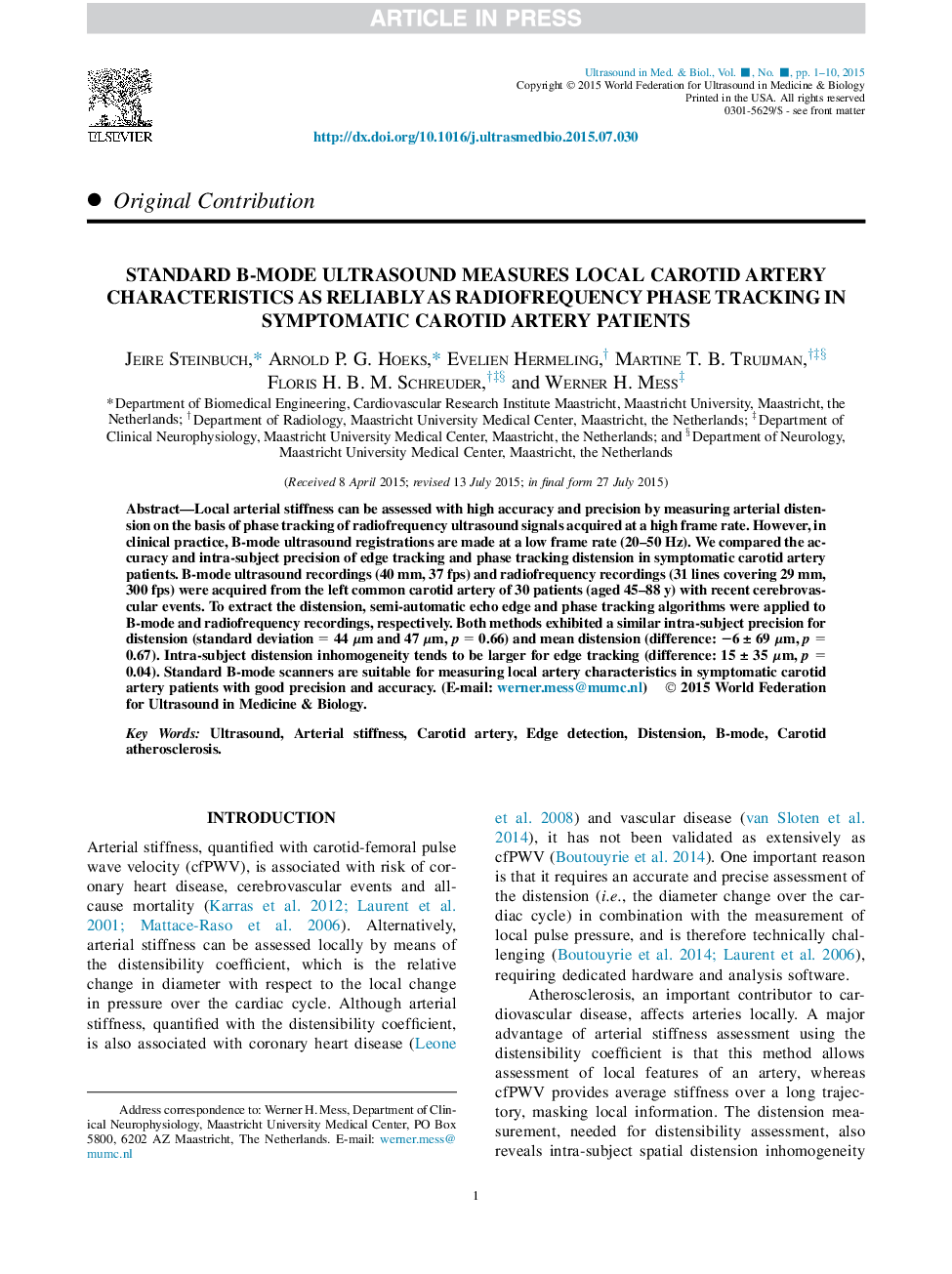| Article ID | Journal | Published Year | Pages | File Type |
|---|---|---|---|---|
| 1760152 | Ultrasound in Medicine & Biology | 2016 | 10 Pages |
Abstract
Local arterial stiffness can be assessed with high accuracy and precision by measuring arterial distension on the basis of phase tracking of radiofrequency ultrasound signals acquired at a high frame rate. However, in clinical practice, B-mode ultrasound registrations are made at a low frame rate (20-50 Hz). We compared the accuracy and intra-subject precision of edge tracking and phase tracking distension in symptomatic carotid artery patients. B-mode ultrasound recordings (40 mm, 37 fps) and radiofrequency recordings (31 lines covering 29 mm, 300 fps) were acquired from the left common carotid artery of 30 patients (aged 45-88 y) with recent cerebrovascular events. To extract the distension, semi-automatic echo edge and phase tracking algorithms were applied to B-mode and radiofrequency recordings, respectively. Both methods exhibited a similar intra-subject precision for distension (standard deviation = 44 μm and 47 μm, p = 0.66) and mean distension (difference: â6 ± 69 μm, p = 0.67). Intra-subject distension inhomogeneity tends to be larger for edge tracking (difference: 15 ± 35 μm, p = 0.04). Standard B-mode scanners are suitable for measuring local artery characteristics in symptomatic carotid artery patients with good precision and accuracy.
Keywords
Related Topics
Physical Sciences and Engineering
Physics and Astronomy
Acoustics and Ultrasonics
Authors
Jeire Steinbuch, Arnold P.G. Hoeks, Evelien Hermeling, Martine T.B. Truijman, Floris H.B.M. Schreuder, Werner H. Mess,
